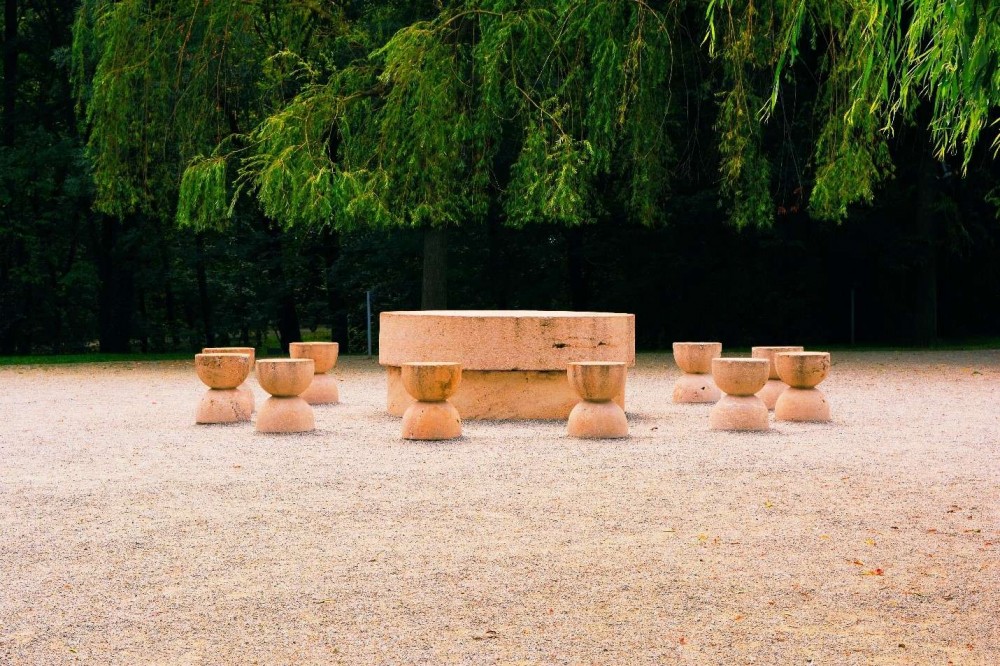How some Romanians helped the world to be a better place
Discover RomaniaHave you ever wondered what is the connection between Romania and the elegant fountain pen? What about the life inside caves? Have you ever wondered how the jet engine was invented? Check out these amazing people who helped the world with all their precious knowledge!
Ioan Cantacuzino
Ioan Cantacuzino was a doctor and microbiologist who founded the Romanian school of immunology, epidemiology, and experimental pathology.
He contributed to the study of cholera, exanthematic typhus, and tuberculosis, having a crucial role in bacteriology and social hygiene research. At the same time, he contributed to the spread of Romanian science internationally. Doctor Ioan Cantacuzino has developed a method of vaccination against cholera, which is used today in countries with still active cases. In 1913, he led the first massive anti-cholera vaccination in infectious outbreaks, known in science as the "Great Romanian Experience", which saved thousands of lives.
Did you know?
A dramatic episode for the entire country took place in 1913 when the Romanian troops became infected with cholera, and the responsibility for staging the epidemic rested with Professor Cantacuzino.
Thus came Ion Cantacuzino to create the remedy against the disease, in an attempt to save the Romanian army in an extremely unstable period for the kingdom of Romania.
Henri Coanda
Henri Coanda was a pioneer of aviation who revolutionized the aviation world by inventing a mobile platform for aerodynamic experiments mounted on a moving train, on which he made quantitative aeronautical determinations using a wind tunnel with smoke, an aerodynamic balance and a special camera designed by him. Coanda-1910 Aircraft was the first airplane equipped with a reactive propulsion system in the world. It was imagined, designed, built, tested, and piloted by Henri Coanda at the age of 24.
He is also the discoverer of the Coanda Effect, which is the tendency of a fluid jet to stay attached to a convex surface. Henri Coanda described it as: "the tendency of a jet of fluid emerging from an orifice to follow an adjacent flat or curved surface and to entrain fluid from the surroundings so that a region of lower pressure develops”. That is a lot of science, right? Let’s learn about it in a more practical way!
Experience the Coanda Effect at home!
The phenomenon can be observed through an easy experiment! Approach a spoon to a jet of water from the tap, with the convex part of the spoon oriented towards the jet. Make sure the water jet has a uniform flow so you can see that near the water jet, the spoon is suddenly attracted to the jet. If the spoon is immobile (i.e., fixed) and the water jet can be moved, then the water jet leaves the trajectory it had previously, following a more curved trajectory and the convex shape of the spoon. Interesting, isn’t it?
Emil Racovita
Emil Racovita was a world-renowned Romanian biologist, polar explorer, founder of biospeology, and the world's first speleology institute.
In the summer of 1904, during research on a cruise ship that the laboratory staff undertook in the eastern Mediterranean basin, Racovita paid a visit to Cueva del Drach, a famous cave on Mallorca. Here, in the dark waters of one of the great lakes that this cavity houses, he captured a small crustacean, still unknown in science, a discovery that marked his entire career as a biologist.
Translucent and completely devoid of eyes, this animal amazed Racovita with its adaptation to the unusual environment offered by the subterranean depths. Racovita immediately sensed that the in-depth study of the beings living in the caves can greatly contribute to the understanding of the complicated mechanisms of biological evolution so he dedicated himself to this study and later on founded biospeology, the science that studies the beings that populate the mysterious and dark world of caves.
Did you know?
Emil Racovita was one of the first biologists in the world to research flora and fauna in Antarctica, boarding with a crew of scientists on Belgica. During this expedition, the ship was caught in the ice for a year, which gave the scientists time to discover the Fin Whale as well as collect rich scientific material.
Nicolae Paulescu
Nicolae Paulescu was a Romanian scientist, doctor, physiologist, and professor at the Faculty of Medicine in Bucharest who contributed to the discovery of the antidiabetic hormone released by the pancreas, later called insulin.
His research began as early as 1899, when he was in France, trying to isolate the active product of the internal secretion of the pancreas. In 1916, he published his research, unfinished, on the pancreas and the disease affecting it, diabetes. Later, with the active involvement of Romania in the First World War, Nicolae Paulescu was forced to stop the research, which he resumed immediately after the end of the war. In 1921, during the session of the Biology Society, Nicolae Paulescu presented in four papers the results of his research work. He found inside the pancreas an active antidiabetic product, which he called pancreatin, a substance that is today known as insulin.
The first World Health Organization international report on diabetes shows that the number of adults living with diabetes has almost quadrupled since the ’80s to 422 million adults and in 2012, diabetes caused 1.5 million deaths.
Nicolae Paulescu is one of those people who deserves eternal gratitude. Thanks to these people, they still live, and their suffering is more bearable.
Did you know?
Many years after the first clinical use of insulin, most articles on diabetes cite Frederick Grant Banting and biochemist John J.R. Macleod, from the University of Toronto, as the only discoverers of the substance. But the medical world knows that Professor Nicolae Paulescu published his research almost two years before the Nobel prize was awarded. In 1921, Professor Nicolae Paulescu announced the discovery of insulin in the Belgian magazine "Archives Internationales de Physiologie”.
Mircea Eliade
Mircea Eliade was one of the great Romanian cultural personalities of the 20th century. The diversity of his preoccupations in the history of religions and literature made him a complex author with recognized authority in the USA at the University of Chicago, where he taught from 1956 to 1986 at his death.
An erudite and encyclopedic personality, he published several scientific papers covering various fields (literature, mythology, linguistics, religion, history, etc.) and of which we can highlight the "Treatise on the History of Religions" which includes an analysis of the sacred from the earliest times. Religion is analyzed from a scientific point of view, human behavior is observed in relation to religious ideas, the variety of beliefs, and the way they are subject to change.
An American citizen in 1966, honored with the title of Distinguished Service Professor, Mircea Eliade is still praised at the University of Chicago, many of his writings being given as references.
For those passionate about a wide range of disciplines located between anthropology and mythology, between history and sociology, the studies of Mircea Eliade (1907-1986) is a must-read. He is perhaps the greatest historian of the religions of the twentieth century. Although he declared his true vocation as a novelist, he will go down in history as a scholar who drew and deciphered a humanist area that he called the history of religions.
Ana Aslan
Ana Aslan was a Romanian doctor specializing in gerontology and also the one who discovered the first anti-aging remedy, called Gerovital. Among the effects of Gerovital or vitamin H3 (procaine) are the reduction of the depressive states, the improvement of the memory, the auditory, optical and olfactory functions, the appearance of the skin and the hair, the increase of the physical and intellectual capacity, but also the desire to live.
She also founded the first Institute of Geriatrics in the world, which was later renamed the National Institute of Gerontology and Geriatrics, having as object of activity: geriatric healthcare, research, and social gerontology. In 1964, the president of the WHO proposed him as a model of the Institute of Geriatrics of the developed countries.
Did you know?
Gerovital has been used in over 70 countries, and it is said that among the personalities who had treatment with Gerovital are Charles de Gaulle, Indira Gandhi, Charlie Chaplin, Salvador Dali, Winston Churchill or Pablo Picasso.

Petrache Poenaru
Petrache Poenaru was a Romanian educator, inventor, engineer and mathematician, and member of the Romanian Academy. He was the secretary of Tudor Vladimirescu, the leader of the Romanian Revolution in 1821 and the “Propaganda Sheet” published at his initiative, meant not only the first Romanian propaganda newspaper, as his name shows, but also one of the first examples in the history of the written press in Romania to correctly present revolutionary ideals of Tudor Vladimirescu.
After Tudor's assassination, Petrache Poenaru went abroad, first to Vienna, then to Paris, where he studied philology and polytechnics, becoming a graduate of the Paris Polytechnic School.
At that time a student at the Polytechnic School in Paris, Poenaru invented a writing instrument with a reservoir called the fountain pen, or as they say in French: "plume portable sans fin, qui s'alimente elle-même avec de l'encre".
However, the invention was not produced in series, so the title of the inventor of the pen is attributed to Lewis Edson Waterman.
Today, the fountain pen is widely used, becoming even a writing tool associated with elegance and sobriety.
Did you know?
Learning of the opening on September 15, 1830 of the first railway line in the world, which made the connection between the localities of Liverpool and Manchester, Poenaru manages to get a ticket and becomes the first Romanian to travel by train. His impressions of the new means of transport may seem silly today, but they reflect the pure truth of those times:
"I made this trip with a new means of transport, which is one of the wonders of the industry of the century ... twenty carriages connected with each other, loaded with 240 people are pulled at once by a single steam car ...".
Constantin Brancusi
Constantin Brâncuşi is considered an innovator because he freed sculpture from the mechanical imitation of nature, he intertwined like no other the spirit and sensitivity, expressing the very essence of things, the dynamism of forms, combining in his works the simplicity of Romanian folk art with the refinement of the Parisian avant-garde. All this explains why Brâncuşi is considered the most important sculptor of the 20th century. But interesting is not only the legacy of Brâncuşi - the artist but also his entire existence, which shows us simplicity, a lot of work, and countless love stories that the titan from Hobita lived.
The Museum of Modern Art in Paris houses the integral workshop of Constantin Brâncuşi, the objects presented revealing the artistic path from Hobita to the center of the artistic universe.
Brâncuşi's works are some of the most appreciated and valued works of art in the world, being, by far, the best-selling creations of a Romanian artist in history and the fourth in the top of the most valuable creations in the world, after Giacometti, Modigliani and Matisse.
Did you know?
In 2002, the sculpture made by Brâncuşi in 1913, "Danaide", was auctioned by Christie's New York for 18 million dollars.
In 2005, the "Bird in Space" creation was sold by Christie's for $ 27.5 million, although the starting amount was only $ 8 million.
